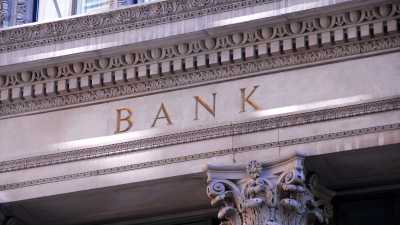Banks Continue to be Cautious When Lending to Small Businesses
in by Mitch Alborn

A recent Federal Reserve poll demonstrates how the epidemic has transformed the financial picture for small businesses. In 2021, almost 85 percent of people had financial troubles, a nearly 20 percentage point increase from 2019. Moreover half of the owners who applied for a loan at the time were eager to grow; last year, the majority of applicants required funding only to meet day-to-day running expenditures.
Meanwhile, inflation is at its greatest level in decades, with raw materials and finished goods prices skyrocketing and employees demanding better pay. In response, the Federal Reserve is hiking interest rates, increasing the cost of borrowing money.
Even in normal times, small firms may struggle to obtain loans from traditional banks because they lack the assets and credit records of larger corporations. Outside of COVID-related initiatives, banks have been more stingy throughout the epidemic. Loan applicants are more likely to be turned down or get less money than they requested two years ago, compared to before COVID-19.
Letha Pugh knew she would have to relocate her firm when the building she leased in was up for auction. As a result, she decided to purchase and refurbish her own building.
Last July, Pugh, co-founder of Bake Me Happy, a gluten-free bakery in Columbus, Ohio, requested a Small Business Administration loan. However, the procedure, which involved a Community Development Financial Institution and a local bank, First Merchants Bank, took a long time.
Pugh was concerned that another bidder would come in with cash and purchase the building she was under contract for. Finally, in January, she was approved for a $780,000 loan.
While Pugh is relieved that things worked out in the end, the story demonstrates how difficult and stressful it can be for a small firm to obtain finance.
"I got off the phone one night and just began weeping because I was so furious, all of these things were occurring, not because of me, but because of bureaucracy and red tape," she explained.
Only around 30% of enterprises that filed for finance last year received the entire amount requested, down from almost 50% in 2019. Firms owned by persons of color, those with fewer workers, and those in the leisure and hospitality industries were the least likely to obtain the entire amount of financing requested. Approximately 68 percent of applicants received part of the money they sought, a decrease from 83 percent in 2019 and 76 percent in 2020.
The present credit climate, according to Todd McCracken, president of the National Small Business Association, might make it more difficult for small firms seeking to recover from the epidemic. Even though their prospects are bright, their balance sheets, which banks use to evaluate loan applications, were damaged by the epidemic.
"Past achievement is rarely a strong predictor of future potential," he explained.
Big banks authorized 14.7 percent of loan requests in February, down from 28.3 percent in February 2020. In addition, small banks granted 20.5 percent of loan requests, compared to 50.3 percent in the same month in 2020. This is according to Biz2Credit, an online lender, based on data from over 1,000 small business owners who requested finance on the company's website.
Because of the banks' stinginess, company owners have turned to alternative lenders such as community banks, internet lenders, and crowdfunding platforms. According to the Fed report, owners were more likely to apply for an online loan last year than in 2020, while applicants were less likely to seek financing from a small bank.
However, there are tradeoffs: alternative loans may be simpler to obtain, but they will almost always come with higher interest rates or hefty penalties. Traditional bank small business loans typically have interest rates ranging from 3% to 7%, however, internet lending rates vary significantly but can reach 10% or higher.
"The good news is that there are many solutions out there for small businesses, but they may not be the cheapest," said Matt Schulz, chief credit analyst at online lending marketplace LendingTree.
During the epidemic, Cache, a truck accessory manufacturer situated in Sandy, Utah, had a surge in business. However, the company's unexpected success put it in a financial jam.
Tyler Green, the company's co-founder, saw the need to increase manufacturing capacity. Meanwhile, shipping expenses increased from $2,500 to $26,000 for each shipping container.
Green and his business partner went to their bank looking for a $50,000 to $100,000 loan but were informed they didn't qualify. Another issue was that Cache could not qualify for pandemic help since it was a new firm that was earning money. And, as a manufacturer, the corporation needs capital quickly.
As a result, the proprietors resorted to QuickBooks' financing division, QB Capital. They received a loan in three days. It costs $15,000 with a 10% interest rate. That doesn't cover everything, but it's plenty to keep the firm running in the near term.
"It truly rescued our company," Green remarked.
Small enterprises might also consider crowdsourced financing.
Claudia McMullin, who founded Hugo Coffee Roasters in Park City, Utah, in 2015, has been unable to secure a loan from a regular bank. She claimed she lacked the historical cash flow that banks like.
"Small firms are trapped in this limbo where they need money to develop but can't acquire finance to grow because they don't qualify since they haven't grown yet," McMullin explained.
She has funded the firm with her own money as well as loans from friends and relatives. Then, last year, she received a hefty purchase order from a grocery store chain for beans that she couldn't afford.
McMullin obtained a loan from an internet lender, which she described as "a lifeline at the moment." However, the terms were tight, with payments due weekly, and she has struggled to pay it off.
"It works only if you get in and out quickly," she explained. "It feels like it's killing me and my financial flow right now."
She resorted to Kiva, which provides low-interest crowdsourced loans, to restructure her debt. McMullin's $25,000 loan features a 0% interest rate and an 18-month repayment duration. Kiva says it will negotiate with borrowers who are unable to return a loan within the time frame specified, but a default disqualifies them from receiving subsequent loans.
Traditional banks do not have to rely solely on online loans. Suzan Hernandez credits community groups with assisting her in navigating the loan procedure.
In 2019, Hernandez launched MamaP, a company that distributes plastic-free personal care goods such as bamboo toothbrushes and laundry detergent sheets. She obtained a mentor through the JP Morgan Chase Minority Business Program, and the mentor urged her to seek assistance from organizations such as the New Jersey Hispanic Chamber of Commerce and the New Jersey Small Business Development Corp.
She's searching for a $500,000 loan or credit line. For the past eight weeks, she has been applying for various loans from community lenders and SBA-backed banks. Although the procedure takes time, she believes it is worthwhile because of the low interest rates given — interest rates range from 3 to 6 percent.
"Right now, we're working with officials to understand what we qualify for and what is necessary," she added, "and it's a lot of paperwork," but it's worth it. "It's been great. They've been more helpful because these aren't direct loans from a traditional bank."




